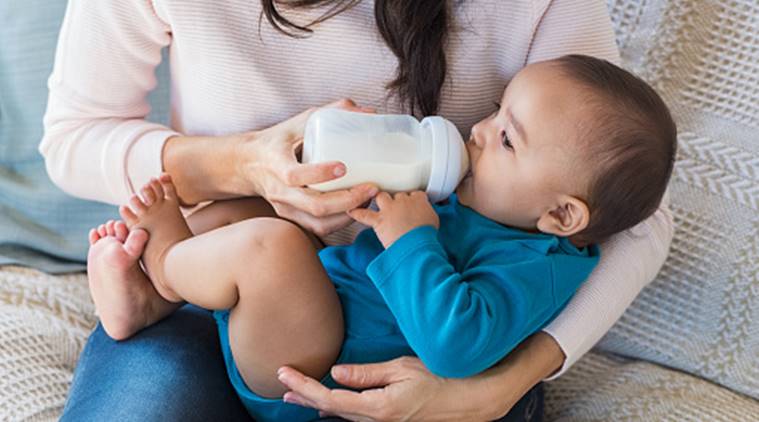Infants should not just drink water in limited quantities, even excess consumption of milk can be fatal for your child. It causes iron deficiency in the body or what is known as milk anaemia.

Anastacia Gencarelli, mother to a two-year-old girl from Ontario, Canada, recently overcame what would be a mother’s nightmare. Her baby suffered a near-death experience after drinking “too much milk”.
Infants should not just drink water in limited quantities, excess consumption of milk can also be fatal for your child. It causes iron deficiency in the body or what is known as milk anaemia.
Gencarelli took to social media to warn parents about the risks of feeding infants a lot of milk. She recounted how her little girl started feeling “lethargic, sleepy, not wanting to eat”. What was initially diagnosed as an infection turned out to be milk anaemia.
The mother rushed her baby to the hospital. “Before I know it, they are all working on my little girl attaching heart monitors, blood pressure cuffs, everything you can think. They start trying to take blood and they cant, they are trying to put an IV in they cant — it took 7 pokes just to get blood out of her. It took 4 pokes before they made the choice to put the IV into her femeral artery ( the part between your leg and crotch) and if this wasn’t successful they were going to drill into her leg to her shin bone and implement the IV straight to her marrow,” she wrote in a social media post.
Gencarelli’s child had to “deal with over 15 pokes for blood and IVs” and had a full blood transfusion. “She will need to be on iron for the forseeable future, she will not be allowed more then two bottles or eight oz portions of milk a day…SHE ALMOST LOST HER LIFE,” the mother further said.
‘Milk is a poor source of iron’
Dr Subhash Rao, consultant paediatrician, Hiranandani Hospital, Vashi, told Express Parenting, “Milk is usually considered to be one of the best foods for the child. Milk, however, is a poor source of iron. In a newborn, the haemoglobin is very high — around 20 — which comes down to the normal level of 12-13 as the child grows. It is because the extra haemoglobin is broken down, there is enough iron that is recirculated in the body.”
Talking about how drinking excess milk can be harmful, he said, “Till the first six months, when the baby is breastfeeding, breast milk can absorb iron very well. The body’s own iron content is good enough for maintaining the haemoglobin level. Beyond six months, if the baby does not begin on solid foods and continues to have milk, the haemoglobin level starts falling because the iron sources start depleting by now.”
How to tell if your baby is full after breastfeeding
Beyond six months, often bottle-fed babies become lazy and they don’t take solid food. They are called milk babies. Such babies are usually bottle-fed beyond one year. “They look very chubby and cute but their haemoglobin levels are very low, sometimes as low as 4-5, making them look pale,” the paediatrician explained.
Again, consumption of cow’s milk in a child less than one year can lead to bleeding in the stomach. Blood loss can also cause anaemia, warned the doctor.
How much milk should a baby drink?
Infants aged above one year should not be given more than half a litre of milk per day. “After the first six months, complementary feeding should be introduced. This does not mean you stop breastfeeding but the baby should be given some semi-solid food also like spinach soup, which is a very good source of iron. If the baby is bottle feeding, try to use formula feeds up to maximum one year. Beyond one year, quit the bottle and give them milk in a glass, which should not be more than half a litre. That is the maximum milk required by a child beyond one year,” said Dr Rao.
Gencarelli’s daughter was drinking four to six bottles of milk a day. Babies after the age of two should only have 16-20 ounces (less than about 0.6 l) of milk a day, she also informed in her post.
Source: Read Full Article
